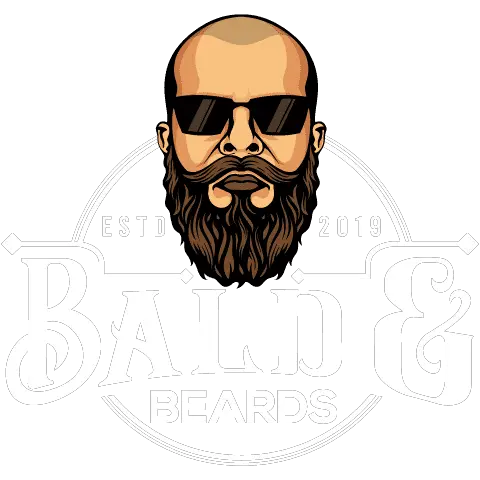It’s natural for someone to think twice about whether to shave over a tattoo, especially if it’s new. It’s a valid concern and the short answer is you definitely can once you have all the facts.
Shaving over tattooed skin is relatively straightforward once you’re fully healed, performed a few successful shaves, and mastered your manscaping.
Still, looking to answer the other important question, and that is, when can you safely shave over a tattoo? This article outlines the things you need to consider, like when and how to shave, so keep reading.
When Can You Shave Over a Tattoo?
When getting new ink, your tattoo artist will give you aftercare instructions for your new artwork, which may vary from artist to artist. Then you’ll need to wait until it fully heals or risk damaging your new investment.
New Tattoo Aftercare
Depending on the area, size and design intricacy, it will take time to recover from the effects of the artist’s instruments.
Always follow your artist’s recommendations for aftercare and shaving.
Typically, the artist will protect the new tattoo by covering it with a thin layer of Vaseline and non-stick bandages. Then wait 24 hours, remove the bandages, wash with a gentle antimicrobial soap and carefully pat dry.
Once dry, you’ll need to continue protecting the skin’s surface. I like with Vaseline Healing Jelly (good) or Aquaphor Healing Ointment (better). Apply twice per day and forego the bandages.
There are many fancy and expensive tattoo care products and you just don’t need them.
Safely Shave Over a Tattoo After it Heals
So, how long until my tattoo is healed? According to this article, the outer layer of skin of a new tattoo typically heals within 2 to 3 weeks under normal circumstances.
However, the skin underneath may take as long as 6 months to heal fully, even if it looks and feels healed. So, keep up with your aftercare as directed by your artist.
Common Problems
Even after waiting for the healing time, still carefully examine the tattooed area, looking out for common problems that can postpone shaving efforts.
Tattoo Inflammation
It’s not uncommon to get mild inflammation after getting a tattoo AKA acute inflammatory reaction. The skin may become irritated at the tattooed site from the needle and ink. It may also appear red and somewhat swollen and typically dissipates over the 2 to 3 week healing.
Tattoo Scabs
During the healing process, it’s common your tattoo will scab up, and this is completely normal.
Besides the scabs, you may also experience dried skin or bubbling. According to Healthline, this is a normal result of the healing process.
As the scabs can get very itchy as the skin dries out, it’s important not to pick on them or to scratch them off. With that said, it’s best to avoid all shaving in the affected area. Aside from ruining the tattoo, it might cause further irritation. So, continue with your aftercare routine.
Cloudy Tattoo
In an article by Authority Tattoo, they discuss the cloudy or milky tattoo and explain the cloudiness is normal in the later stages of healing. By this time, the scabs should’ve fallen off and the ink underneath will slowly regain its vibrance.
If you’re experiencing any signs of cloudiness on the newly tattooed skin, then you should delay any attempt at removing hair from the cloudy spot.
So, it’s best to keep your hands off and protect the area during this period and hold off on shaving.
Peeling Tattoo
As part of the normal healing process, peeling is totally natural and expected as new skin begins to repair itself. Typically, you’ll see peeling within the first 2-3 days after the new tattoo. You should avoid shaving when the skin is peeling.
After Tattoo Pain
The pain experienced after a new tat varies from person to person, and associated with the abraded skin and swelling thereafter.
Regardless of your personal healing time, if you’re still experiencing the sensation of pain, then avoid shaving, at least temporarily or until the pain subsides. If the pain continues, seek medical advice.
Shaving might cause infection or allergic reactions.
Other Notes
Preserving Your Tattoo
Again, always follow the advice of your artist.
- The patch should stay covered with healing jelly until it has healed completely.
- Avoid harsh soaps with sulfates as they can destroy your chances of achieving a permanent marking.
- Be patient. Aside from the importance of healing time, the ink also needs time to sink down from the epidermis (outer layer of the skin) to the dermis (deeper layer of the skin).
Harsh Effects Of Shavers
Shaving equipment such as manual razors and electric razors affect the skin’s natural shedding (some more than others). So, shaving too soon could remove the skin before it heals and could destroy the natural process needed to set the tattoo.
So, used at the wrong time, a shaver could ruin a tattoo. It could cause it to become discolored or trigger an infection.
Shaving Before a Tattoo
Should I shave before getting a tattoo? The simple answer is no. You’ll likely receive instructions you prior to your appointment and any qualified artist will typically shave the area with a fine razor themselves.
Final Thoughts
The issue is not about whether you can shave over a tattoo. You just have to be patient enough to wait for it to heal completely before attempting your shaver. Aside from not ruining the tattoo art you’ve paid for, you can also avoid damaging the skin and allow faster healing.


